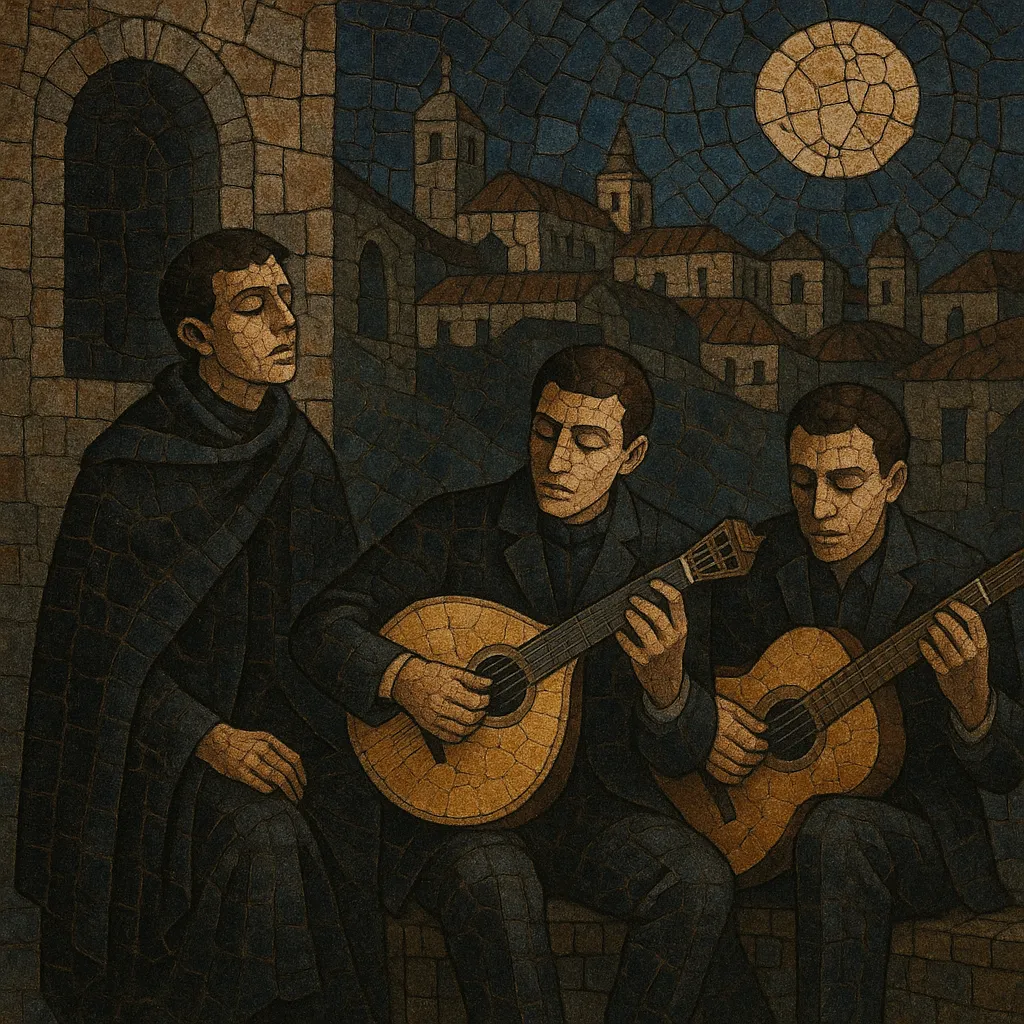Fado de Coimbra is a scholarly, serenade-oriented branch of Portuguese fado associated with the University of Coimbra and its academic traditions.
It is typically performed by male student singers at night, accompanied by the Coimbra-tuned Portuguese guitar (guitarra de Coimbra) and classical guitar (viola). The tuning, timbre, and repertoire favor a dignified, lyrical delivery that highlights poetry, restraint, and saudade.
Compared to Lisbon fado, the Coimbra style is more austere and classically inflected, with texts that often reference student life, the city’s river Mondego, nocturnal streets, and unrequited love.
Fado de Coimbra crystallized in the 1890s within the milieu of the University of Coimbra. Early figures like Augusto Hilário helped codify a repertoire and attitude distinct from Lisbon’s popular fado, favoring serenade settings, poetic texts, and a more formal stage demeanor.
In the first decades of the 1900s, performers such as António Menano and Edmundo Bettencourt shaped a recognizable vocal style—projected, declamatory, and dignified—supported by the Coimbra-tuned Portuguese guitar and classical guitar. Artur Paredes modernized the guitar’s techniques and sound, laying the groundwork for a virtuosic instrumental language associated with the city.
The tradition continued to evolve through the work of Artur Paredes’s son, Carlos Paredes, who expanded the expressive palette of the Portuguese guitar. Singers like Luiz Goes, Fernando Machado Soares, José Afonso, and Adriano Correia de Oliveira emerged from the Coimbra circle, some bridging the genre with broader singer-songwriter and political song movements while retaining its poetic sensibility.
While always anchored to academic rites and nocturnal serenades, Fado de Coimbra has been revived by ensembles and cultural centers in Coimbra. Contemporary practice preserves the ceremonial dress, repertoire variants (e.g., classic fados attributed to early masters), and the signature Coimbra guitar tuning, while incorporating careful arrangements and archival research to maintain historical continuity.


